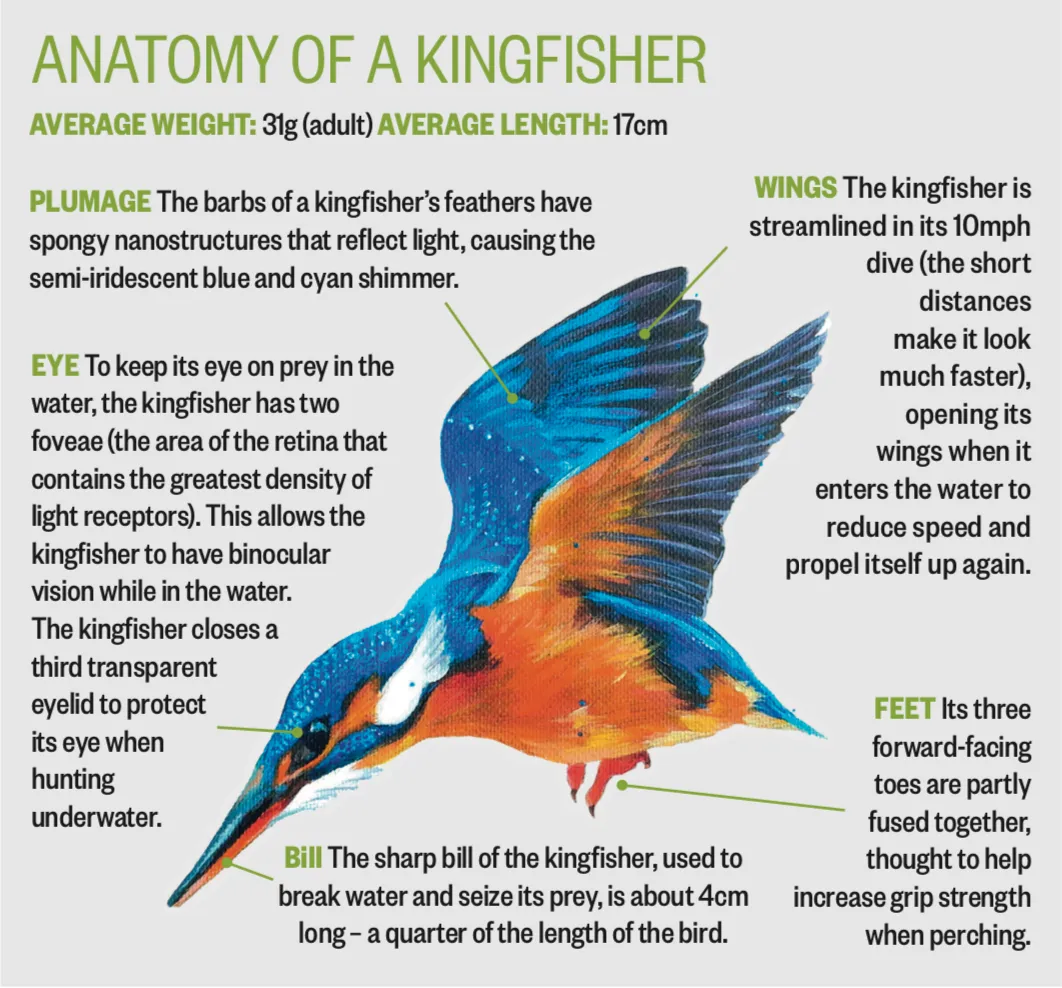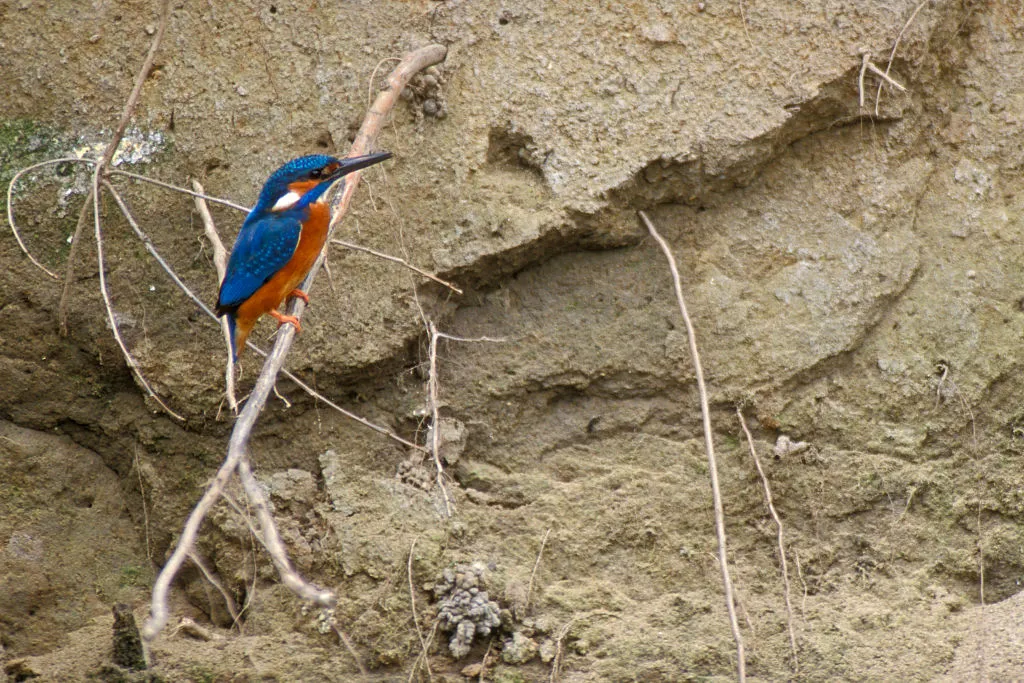There's nothing more exciting than catching your first glimpse of a kingfisher. And it really is a glimpse, for as soon as you've seen that telltale flash of iridescent blue, suddenly it's gone again, either diving into the water like a missile or flitting away downstream.
April until August is prime time for spotting kingfishers as they start to dig their nests in the riverbank and perch on branches to dive for fish, so pull on your walking boots and head down to your nearest river or canal for a dazzling glimpse of the river king.
Our expert guide reveals what kingfishers look like, where they nest, and the best places to see them in the UK.
Kingfisher statistics
Average weight: 31g (adult)
Average size: 17cm
Estimated summer breedings pairs in Britain: 5,100
What do kingfishers look like?

Plumage: The barbs of a kingfisher’s feathers have spongy nanostructures that reflect light, causing the semi-iridescent blue and cyan shimmer.
Eye: To keep its eye on prey in the water, the kingfisher has two foveae (the area of the retina that contains the greatest density of light receptors). This allows the kingfisher to have binocular vision while in the water. The kingfisher closes a third transparent eyelid to protect its eye when hunting underwater.
Wings: The kingfisher is streamlined in its 10mph dive (the short distances make it look much faster), opening its wings when it enters the water to reduce speed and propel itself up again.
Feet: Its three forward-facing toes are partly fused together, thought to help increase grip strength when perching.
Bill: The sharp bill of the kingfisher, used to break water and seize its prey, is about 4cm long – a quarter of the length of the bird.

Where do kingfishers nest?

The kingfisher does not nest, but instead burrows up to a metre into riverbanks. Occasionally old burrows will be re-excavated, but often new tunnels will be dug – the male testing for a soft point with his bill, before perching and digging at the bank. The whole process to create a home takes about a fortnight, with both birds taking on shifts at the coalface, before backing out the way they came, shuffling spilled earth into the river with their tiny feet. The nest tunnel ends in an oval chamber, which is angled downwards to stop eggs rolling away into the river.
For all the hard work to make it, the kingfisher is not house-proud. If you often hear a kingfisher before you glimpse it, you’ll probably smell a kingfisher burrow before you spot the narrow bankside opening. Canoeing on the River Wye, I watched a male and a female fly into a burrow that dripped with a stinking green grot of faecal matter, coughed-up pellets and rotting fish. Even the kingfishers seemed to be mildly disgusted with the situation, with each parent washing as soon as they got out.
More related content:
- Garden bird guide: how to identify common birds
- Britain’s most beautiful river walks
- Riverside cottages and B&Bs to stay this summer
Grey heron/Credit: Getty
What do kingfisher eggs look like?
If conditions are right, kingfishers can have up to three clutches, often using different burrows to avoid the fetid stink of the previous inhabitants. They lay around six perfect, white, gobstopper-sized eggs, with the first laid in March and April and incubated by both parents. The young stay in the nest for another three weeks before fledging. The adults support them for another three or four days, before aggressively shooing them away and starting the whole process again.
Many of the brood will die in these early weeks. According to Paul Stancliffe at the British Trust for Ornithology, this is largely due to inexperience; the birds haven’t yet had time to grow into their name. But even those that survive are not long-lived. The oldest recorded ringed kingfisher was just four-and-a-half, with most only surviving for 12 months. The kingfisher, it seems, is the rock star of the river, destined to live fast and die young.
Unusual facts about kingfishers
The Tudors, with characteristic gruesomeness, believed a dead kingfisher hung by its neck would slowly rotate towards bad weather.
Known in Greek legend as the halcyon bird, the kingfisher gave its name to the peaceful “halcyon days” – a period of time at the start of December when the kingfisher was once thought to calm the sea and lay its eggs on a raft of sticks and bones.
Where to see kingfishers
Of course, you don’t have to get into the water for a good sighting of a kingfisher. A vantage point on bridges over rivers, streams and canals can give you a chance to see a kingfisher blazing over the water for slightly longer. Here are some of the best places in the UK to get up close and personal with the fisher king.

